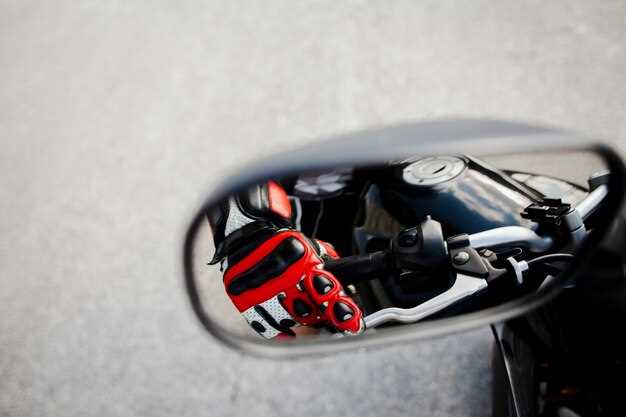

Aerodynamics plays a crucial role in the performance of racing motorcycles. Understanding how air interacts with the motorcycle’s body can provide racers with an edge in speed and stability. The principles of aerodynamics can affect everything from top speed to cornering ability, making it essential for riders and engineers alike to grasp these concepts for optimal performance on the track.
One of the primary considerations in motorcycle aerodynamics is drag. This resistance created by the air can significantly impact a motorcycle’s acceleration and top speed. By reducing drag, racers can achieve higher velocities without requiring additional power. Factors such as the rider’s position, the bike’s fairings, and even the placement of accessories can influence drag coefficients and should be carefully optimized.
Another vital aspect of aerodynamics is downforce. While cars benefit greatly from downforce, motorcycles require a different approach due to their two-wheel configuration. The right aerodynamic design can enhance stability during high-speed maneuvers by increasing the load on the tires, enabling better traction and control. Understanding how to balance these aerodynamic forces is key to refining racing techniques and achieving exceptional lap times.
In conclusion, mastering the principles of motorcycle aerodynamics is essential for any serious racer. By focusing on drag reduction and optimal downforce creation, racers can significantly enhance their performance on the track, making a profound impact on their results. The attention to detail in aerodynamics can turn a good racer into a great one, setting the stage for competitive success.
How Wind Tunnel Testing Improves Racing Motorcycle Design

Wind tunnel testing is a critical component in the development and enhancement of racing motorcycles. By simulating real-world aerodynamic conditions, engineers can gain valuable insights into how a motorcycle interacts with airflow at high speeds. This process allows for precise adjustments to the bike’s design, optimizing both performance and stability.
One of the primary benefits of wind tunnel testing is the ability to identify areas of high drag. Drag is the resistance a motorcycle faces when moving through the air, and minimizing it is essential for achieving higher speeds. Through detailed analysis, engineers can pinpoint specific components that contribute to drag and make informed modifications, such as altering the shape of fairings or adjusting the positioning of components.
Moreover, wind tunnel testing aids in enhancing downforce, which is the force that pushes the motorcycle towards the ground, improving traction and stability during acceleration and cornering. By experimenting with various aerodynamic shapes and surfaces, engineers can engineer a design that maximizes downforce without significantly increasing drag.
The iterative process of testing and refining allows designers to assess the impact of each modification in real-time. This minimizes reliance on theoretical models and provides empirical data that can lead to breakthroughs in design efficiency. With advanced sensors and data acquisition systems, every aspect of the airflow can be analyzed, enabling fine-tuning that might otherwise go unnoticed in traditional design processes.
Additionally, wind tunnel tests can simulate various racing conditions, such as crosswinds or the effect of drafting behind competitors. This is crucial for optimizing performance in dynamic race environments. By understanding how a motorcycle behaves under different airflow scenarios, manufacturers can develop bikes that perform consistently well regardless of external conditions.
In conclusion, wind tunnel testing is indispensable in refining the aerodynamic profile of racing motorcycles. It not only helps reduce drag and enhance downforce, but also allows for informed design choices based on actual airflow data. This results in motorcycles that are faster, more stable, and ultimately more competitive on the racetrack.
Key Factors Influencing Drag Coefficient for Performance Bikes
The drag coefficient is a crucial parameter that significantly affects the performance of motorcycle racing. Understanding the key factors influencing this coefficient can help manufacturers and racers optimize their bikes for maximum speed and efficiency.
Aerodynamic Shape is one of the most critical factors impacting drag. The overall design of a motorcycle, including fairings, windscreens, and bodywork, plays a vital role in how air flows around the bike. A streamlined shape reduces turbulence and minimizes drag, enabling higher speeds.
Surface Texture matters as well. Smooth surfaces create less friction and allow air to flow more freely. Textured or uneven surfaces can increase turbulence, raising the drag coefficient. Therefore, materials and finishes that enhance smooth airflow are preferred for performance bikes.
Rider Position is another significant influence on drag. The riding posture can either enhance or hinder aerodynamics. A lower, more compact position reduces the overall frontal area exposed to wind, decreasing drag and improving speed.
Accessory Components, such as mirrors, lights, and luggage, can affect the overall drag profile of a bike. Minimizing the number and size of these components can lead to improved drag coefficients, thereby enhancing performance on the track.
Speed itself also plays a role; as motorcycles reach higher speeds, the nature of airflow changes, altering the effective drag experienced. At higher velocities, drag increases exponentially, making it essential to consider designs that remain efficient under race conditions.
Finally, Ground Clearance affects airflow around the bike. Adequate clearance allows air to flow smoothly underneath the bike, whereas lower clearance can cause vortices, which increase drag. Balancing ground clearance with stability is crucial for enhancing performance.
By carefully analyzing and optimizing these factors, motorcycle manufacturers can significantly lower the drag coefficient of performance bikes, resulting in improved speed, efficiency, and overall racing performance.
Adjusting Rider Position for Optimal Aerodynamics in Racing

In motorcycle racing, achieving the best aerodynamic profile is crucial for enhancing speed and performance. The rider’s position significantly influences the bike’s overall aerodynamics, and minor adjustments can result in substantial improvements in lap times.
Body Positioning: To maximize aerodynamic efficiency, riders should aim for a low and forward-leaning stance. This posture reduces frontal area exposure, allowing air to flow more smoothly over the rider and bike. The forearms should be parallel to the ground, with elbows tucked in close to the body. This positioning minimizes wind resistance and creates a streamlined silhouette.
Leg Placement: The positioning of the legs is equally important. Riders should keep their knees close to the fuel tank to decrease turbulence and drag. Additionally, shifting the weight slightly onto the balls of the feet can improve control and response while maintaining an aerodynamic form.
Head Position: The rider’s head should be tucked down and in line with the spine, creating a smooth transition for airflow. A well-positioned helmet not only reduces drag but also enhances stability at high speeds. Looking ahead while maintaining this head position allows for optimal vision without compromising aerodynamics.
Adjustments on the Bike: Fine-tuning the suspension and handlebar height can also facilitate better rider positioning. A lower handlebar setup encourages a more aggressive tuck, while a correctly adjusted seat height allows for effective leg and weight distribution.
Practice and Feedback: Riders should regularly practice different body positions during training sessions to determine what adjustments yield the best performance. Employing data analysis tools can provide feedback on airflow and drag, enabling riders to make informed adjustments to their position for competitive advantages.
By focusing on these aspects of rider positioning, racers can significantly enhance their aerodynamic performance, leading to improved speed and efficiency on the track.





